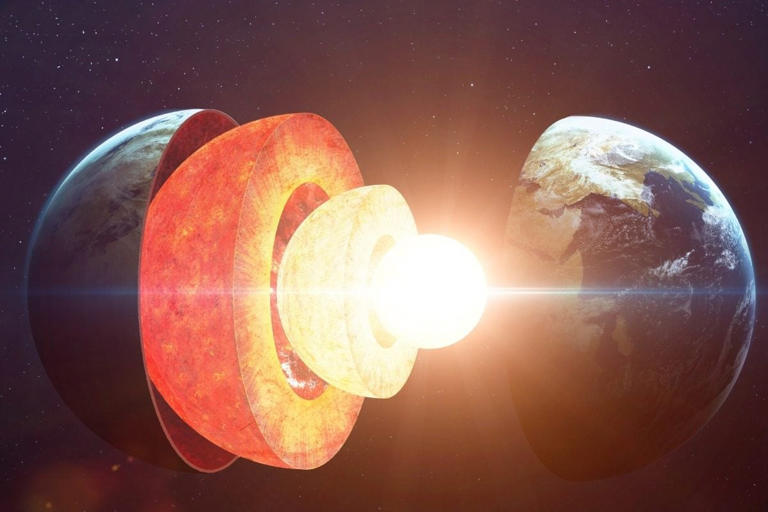
Earth’s Inner Core Slowing and Reversing: New Insights from Scientific Research
Discovery and Observation
Since Danish seismologist Inge Lehmann discovered the Earth’s inner core in 1936, scientists have been closely monitoring its movements. Recently, a groundbreaking study has revealed that the Earth’s inner core is not only slowing down but may also be reversing its rotation. This discovery has profound implications for our understanding of Earth’s geodynamic processes.
Recent Findings
A research paper published in the scientific journal Nature in June this year provides detailed insights into this phenomenon. The study reports that the Earth’s core has decelerated to such an extent that it is now moving backward relative to the fluid layers surrounding it. This significant finding was highlighted in a report by US broadcaster CNN, which accessed the study.
Understanding the Core’s Rotation
According to the study, the Earth’s core’s rotation is part of a decades-long cycle of slowing down and speeding up. Dr. John Vidale, Dean’s Professor of Earth Sciences at the University of Southern California’s Dornsife College of Letters, Arts and Sciences, and co-author of the study, explained that their findings indicate changes in the rotational speed of the inner core follow a 70-year cycle. Dr. Vidale emphasized that this research resolves a long-standing debate about the inner core’s movements and its patterns over recent decades.
Implications of a Slowing Core
The Earth’s inner core, located approximately 3,220 miles (5,180 kilometers) beneath the surface, is a solid metal sphere primarily composed of iron and nickel. Its temperatures are comparable to the surface of the sun, reaching up to 5,400°C. The inner core is encased by a liquid metal outer core, and this unique structure plays a crucial role in the geodynamic processes that influence Earth’s magnetic field and geological activity.
Forces at Play
The rotation of the Earth’s inner core is influenced by several forces. The planet’s magnetic field exerts a strong force on the solid metal core, causing it to spin. At the same time, the gravity and movement of the fluid outer core and mantle create a dragging effect on the inner core. Over many decades, the interaction between these forces results in variations in the core’s rotational speed.
Magnetic Field and Geological Impact
The movement of metal-rich fluid in the outer core generates electrical currents, which in turn create Earth’s magnetic field. This magnetic field is essential as it protects our planet from harmful solar radiation. Although the inner core’s direct influence on the magnetic field is not fully understood, scientists suggest that a slower-spinning core could affect the magnetic field and slightly shorten the length of a day. Researchers reported these potential impacts in their 2023 study.
Conclusion
The discovery that the Earth’s inner core is slowing and possibly reversing its rotation provides valuable insights into the complex dynamics of our planet’s interior. Understanding these processes is crucial for comprehending Earth’s magnetic field and its broader geological implications. As scientists continue to study the inner core, we can expect to gain a deeper understanding of the intricate forces that shape our planet.



